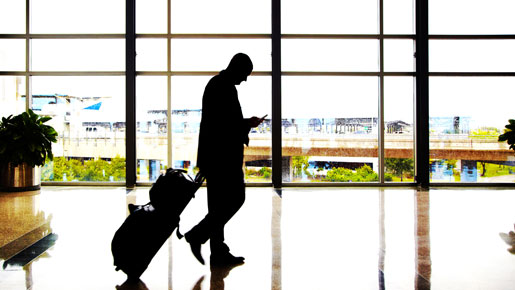
It would be near on impossible to calculate the amount of vital cash that has been spent on travelling long distances and long hours over the years.
The personal touch – having a company representative at an important meeting – can add weight to those decisive moments and critical stages. However, every corporation must consider the financial implications, if nothing else, of sending that representative around the world to sit in on a meeting that may have little or no effect.
Of course jet-setting around the world does not only pose financial implications, with the growing concerns surrounding global warming, more companies are trying to show themselves as environmentally friendly. Indeed, many companies present themselves to a more and more green consumer as the environmentally friendly option.
Having large amounts of air miles does not necessarily account for a popular business front, and can potentially lead to a decline in revenue. Of course, when information needs to be exchanged, there can be few alternatives than making that long distance flight. When particularly sensitive information is involved, there can be few other alternatives than taking a few hours kip on a long haul journey.
Many recall a time when flying was a luxury – carried out once, possibly twice a year. Those days were the golden age of the letter and the international postal service. Although still invariably used throughout the business world, the letter became surplus to requirements, indeed inadequate, due to the speed of business transactions. Long conversations could take weeks if not months to reach a conclusion. The benefit of course was hard copy evidence of how operations were proceeding.
Come the computer age, and the email. The internet took the place of the postal service insomuch that interactions can take place and relationships built upon. With that and the telephone, it seemed that business was being worked on a real time format. This was and is a worldwide phenomenon for inter-company exchange. One issue is surely the potential within email exchange for a conversation to be one sided: what if the person at the other end is on holiday? What if they have changed their address? Maybe they are no longer with the company?
This can be potentially damaging to a transaction, as relations can be broken down, and the pitfalls of the ‘junk’ folder. Thankfully, teleconferencing can get rid of this one-sided exchange, placing an interaction in the moment and demanding those crucial answers instantaneously.
It also allows the employee to work from home or the office. Cutting out the long, expensive flights reserves more cash flow for other areas of the business, allows the company to sell itself as a green organisation, and gives an extremely professional and shows technological initiative.
Possibly the best option when considering videoconferencing – certainly the most advanced – is telepresenc. This allows both sides to become completely embedded in the exchange. Psychologists argue that a lot of detail can be lost without considering facial expressions, and so telepresence provides the most fulfilling exchange of information without actually being in the same room as a colleague or client.
The video and audio information is compressed using a codec. The data is then presented in the form of packets through the system and decompressed again. This happens in less time than could be perceived, allowing response time to be minimal.
Telepresence is moving into many more areas, making it a must have facility for all companies. From schools to hospitals to the general public, the future of communications lies in telepresence.

